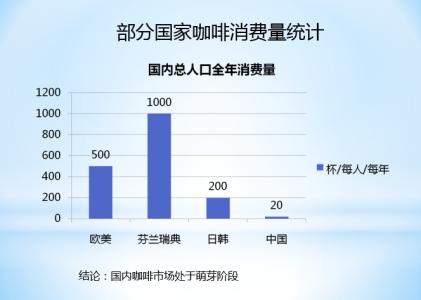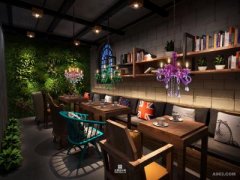Grading of coffee beans-Brazilian coffee bean treatment
Grading of coffee beans-Brazilian coffee bean treatment
Harvest year: 2012-the year is for roasters' reference, so the year is usually not marked on the label of roasted ripe beans on the market.
In the coffee beans sold in the market, in order to reduce the trouble and identification burden of consumers, they generally do not make such complicated labels. There may be great differences in the flavor of coffee beans in different small producing areas and different years. Professional roasters will taste the raw coffee beans of the same year in different producing areas every year, and adjust the way of roasting and blending, so that consumers can get coffee with stable flavor and slight difference.
However, although the coffee taste indication described above is a common practice of coffee roasters, because the domestic coffee market is in its infancy, consumers can not taste the differences in various beans, so the coffee beans sold on the market are mixed. There is often a phenomenon of inferior quality, so when consumers buy high-level coffee beans, they still need to keep their eyes open and carefully identify trustworthy businesses.
It is still in use in many parts of Brazil. The method of identification is to randomly take 300 grams of samples and put them on black paper, because black paper can best avoid reflection. Then, examined carefully by the professional appraiser, find out the defective beans in the sample, and accumulate different scores according to the types of defects. For example, one black bean, one pebble, five big pebbles, five broken beans, five pest beans, two sour beans, one dry peel, two middle dried peels, three small dried peels, five unshelled beans, three shell beans, and so on. After identification, the grade is NY2~NY8 according to the accumulated defect score, and there is no NY1. If you want to buy first-class (NY1) Brazilian beans, it will make a joke. Indonesian coffee beans are also classified in this way, mainly divided into six grades, namely Gr1~Gr6. The same is true of Ethiopia, with the highest level of Gr2
Generally speaking, in alpine areas, due to the cold climate and the slow growth rate of coffee, the density of raw beans is higher and the texture is harder, and the more mellow and aromatic the coffee is, and it has a supple sour taste; on the contrary, the density of raw beans is smaller and the texture is less hard, then the quality of coffee is worse, so there are also people who classify it as "hardness". This classification method can be divided into the following categories: extremely hard beans, height of about 4500 to 5000 feet, referred to as SHB; high hard beans, height of about 3000cm 4500ft, referred to as GHB; hard beans, height of about 2000,000ft, referred to as HB; Pacific coastal area, height of about 984ft 3280ft, referred to as Pacific. Guatemala, Costa Rica, El Salvador, Mexico, Honduras and Haiti are all classified in this way.

Important Notice :
前街咖啡 FrontStreet Coffee has moved to new addredd:
FrontStreet Coffee Address: 315,Donghua East Road,GuangZhou
Tel:020 38364473
- Prev

Description of Taste and Flavor of Tanzanian Coffee beans introduction of varieties produced by grinding scale
Tanzania coffee beans taste characteristics description grinding scale production area varieties introduction coffee is the main cash crop in Angola, is the primary export of Burundi, is the largest foreign exchange industry in Kenya in the past. Ethiopia is known as the hometown of coffee, C ô te d'Ivoire occupies an important position in coffee production in the world, and Uganda is famous for its production per unit area in Africa. A glass of water to wash Yega snow
- Next

Introduction to the growing Environment of Coffee beans in WAHANA Manor, Indonesia
The planting environment of coffee beans in WAHANA Manor, Indonesia. Concentration Strength Leverl:1 low Low;2 low to medium MediumLow;3 Medium;4 medium to high Medium High;5 high High species / varieties Type/Variety long bean Longberry Origin Oringins: Hua Hanna Manor, North Sumatra Wahana Estate,Sidikalang,Nort
Related
- Detailed explanation of Jadeite planting Land in Panamanian Jadeite Manor introduction to the grading system of Jadeite competitive bidding, Red bid, Green bid and Rose Summer
- Story of Coffee planting in Brenka region of Costa Rica Stonehenge Manor anaerobic heavy honey treatment of flavor mouth
- What's on the barrel of Blue Mountain Coffee beans?
- Can American coffee also pull flowers? How to use hot American style to pull out a good-looking pattern?
- Can you make a cold extract with coffee beans? What is the right proportion for cold-extracted coffee formula?
- Indonesian PWN Gold Mandrine Coffee Origin Features Flavor How to Chong? Mandolin coffee is American.
- A brief introduction to the flavor characteristics of Brazilian yellow bourbon coffee beans
- What is the effect of different water quality on the flavor of cold-extracted coffee? What kind of water is best for brewing coffee?
- Why do you think of Rose Summer whenever you mention Panamanian coffee?
- Introduction to the characteristics of authentic blue mountain coffee bean producing areas? What is the CIB Coffee Authority in Jamaica?

